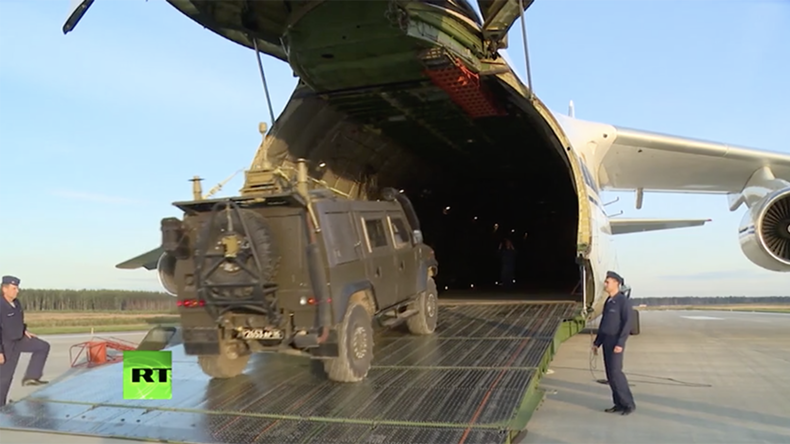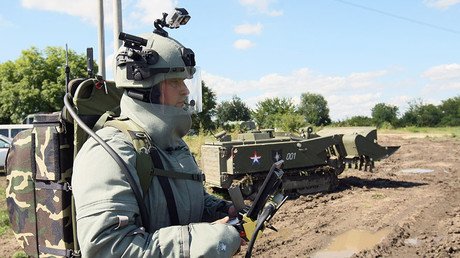Russia sends sappers to help demine liberated parts of Deir ez-Zor (VIDEO)

A group of mine clearance specialists of the Russian Armed Forces have been sent to the Syrian city of Deir ez-Zor to take part in the mine removal operation following the breach of the city blockade, the Russian Defense Ministry said.
“A forward detachment of the International Mine Action Center of the Armed Forces of the Russian Federation has been deployed to the Syrian Arab Republic,” the ministry’s press service said in a statement.
The unit, consisting of more than 40 mine clearance specialists joined by a squad of specially trained mine-detecting sniffer dogs and equipped with seven specialized vehicles, was already transferred to the Khmeimim Air Base in Syria’s Latakia Province, it said. The military specialists would be soon redeployed to the liberated districts of Deir ez-Zor for reconnaissance operations before the actual demining starts.
The forward detachment will be followed by other Russian mine disposal units, the statement said, adding that the total number of Russian specialists working in Deir ez-Zor would eventually be 175. They will have 42 pieces of specialized military equipment, including Uran-6 state-of-the-art multi-purpose de-mining robotic complexes, which were previously used in Palmyra, Syria.
The bomb disposal units will first focus on demining roads leading to hospitals, schools, apartment blocks, as well as water and electricity supply facilities and historical monuments.
It will not be their first time working in Syria, as they previously conducted successful mine clearance operations in Aleppo and Palmyra after liberation by the Syrian Army from jihadists. The Russian specialists removed around 62,000 explosive devices and cleared about 5,300 hectares of land during the operations, according to the ministry.
Video courtesy of Russian Ministry of Defense
While working in Palmyra in April 2016, the Russian combat engineers discovered and defused “one of the largest jihadist arsenals” containing more than 12,000 explosive devices after they cleared 234 hectares of land, 14 miles of road, and 10 architectural objects at the UNESCO World Heritage site located near the city.
In December 2016, Russian bomb disposal teams also worked in Aleppo, Syria after it was wrested from rebel control. They managed to clear 966 hectares of land, made safe 2,149 buildings in and around Aleppo, including 44 schools, 38 mosques, 10 medical facilities, and swept 350km of road in the area for mines, according to a Russian Syrian Reconciliation Center report issued at that time.
They also found explosives and munitions that came from various parts of the world, including the US and Germany. “The munitions we found were German, American, Bulgarian… The amount they had was somewhat disconcerting,” Major Ivan Gromov, a bomb disposal squad leader, said at the time.
The Syrian Army, supported by the Russian Air Force, broke a three-year blockade of Deir ez-Zor in early September.













